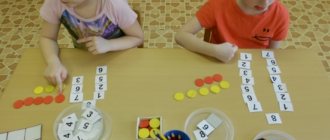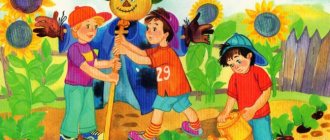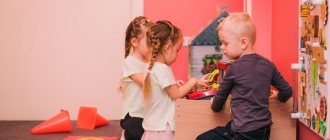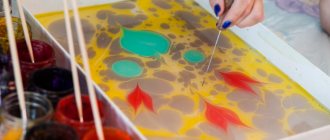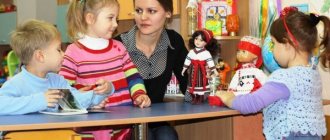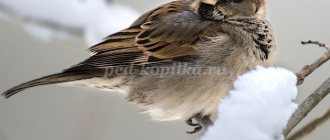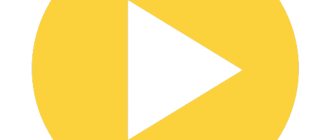The emphasis in modern education of preschool children is on developmental education. Math classes are no exception. The formation of elementary mathematical concepts develops personality, intelligence, logic and abstract thinking. It sharpens attention and memory, develops speech and promotes the most comfortable integration of the baby into the world around him. Fun math for children 3-4 years old will help develop qualities such as curiosity, goal achievement, and discipline. Introduces spatial and temporal logic.
What does mathematics teach 3-4 year old children?
Every educated parent wants to understand how well their child is developed. Are you missing any skills that are important in the modern world that you should focus on? To adequately assess children's knowledge and skills, you need to know what today's education system requires of them.
Mathematics for three-year-old children
Mathematics at 3 years old in kindergarten is not difficult. Children should:
- Master working with numbers within five. This is both an ordinal and a reverse count.
- Understand what this or that number consists of (for example, 5 is 4+1).
- When counting, use fingers, counting sticks, and other available objects.
- Correctly use the names of ordinal numbers, as well as cardinal numbers in the names of numbers.
- Recognize written numbers and be able to write them yourself.
- Name the number that comes before the given one, as well as after it.
- Use the terms “more”, “less”, “the same”. Clearly understand the difference between them.
- Master orientation in space (for example, show on a piece of notebook where the lines are higher and lower, which are on the left, right, between them, what is in the center, what is above, what is below).
For your information! Children must distinguish objects.
By size:
- Big bigger.
- Small - less.
- Short - shorter.
- Long - longer.
- Tall - higher.
- Low - lower.
- Wide - wider.
- Narrow - narrower.
Math classes
By geometric shape:
- square;
- circle;
- triangle;
- rectangle.
They must find these figures and be able to draw them, name the geometric shape of surrounding objects. Learn to identify their color. Distinguish between a circle and a ball, a square and a cube.
Card index of FEMP games used in the second junior group
Games with mathematical content offered in the second junior group become more complex. They perform a specific task or combine several tasks.
- Compiling groups of objects, obtaining equality, selecting objects according to some criterion (reinforce the concept of quantity, magnitude).
- Distinguishing geometric shapes.
- For orientation in space (optionally - on a plane).
- Reinforcing temporary concepts (parts of the day).
Children of the fourth year of life, without prompting from the teacher, decide what to do in their free time. Therefore, the mathematics corner in the group becomes more saturated with various aids, in particular, more board and printed games appear.
In the second younger group, board and printed games are already appropriate
The rules of outdoor games are becoming more complicated, and numbers are introduced into finger gymnastics, which children involuntarily remember.
Educational
The catalog of didactic games in mathematics in the second junior group is quite voluminous. In early preschool age, games are popular, the essence of which is to compare the shapes of objects and objects with geometric figures. This is, for example, “Geometric Lotto”, “Find an object of the same shape”.
Kids also love to make beautiful ornaments from geometric shapes and decorate objects with them. This is the game “Make a pattern on a mitten”: preschoolers are offered mittens with a variety of patterns of geometric shapes. The children’s task is to decorate the second one in the same way to make a pair.
Pupils of the second junior group must place on the second mitten the same pattern of figures as on the first
“Collect beads for the doll.” The child is offered a thread and three-dimensional geometric shapes with a hole inside. Alternating the figures in a given sequence, the baby assembles a beautiful decoration for the doll.
An exciting game guide will help children remember shapes, primary colors and is very useful for the development of fine motor skills
This game has variations:
- lay out beads from identical figures of different colors;
- from different figures of the same color;
- from two different figures of different colors;
A simpler version of the game is beads, which are laid out from flat figures on a sheet of paper with a drawn thread.
Children aged 3–4 years old enjoy playing “Wonderful Bag”: the teacher names a geometric figure, and the children (one by one) find the same one in the bag by touch. By the way, you can use Dienesh blocks for such activities.
“Zoo” reinforces the concepts of “one” and “many.” The teacher informs the children that many new animals have been brought to the zoo (shows figurines), and leads the children to the idea that the animals cannot all be together. They need to be distributed into different cells (paper boxes). Each child takes one animal and transports it by car into a cage. All this activity is accompanied by questions to the teachers: how many animals, how many cars, how many cages.
Fix Your Car teaches you to classify objects based on their color and size. The teacher invites the kids to turn into auto mechanics and change the wheels on cars. But you need to be careful: a larger car must have larger wheels and vice versa.
For each car you need to choose wheels of the appropriate color and size.
Movable
In the second junior group, various outdoor games are held, organized according to the principle “Find your house.” However, each time, in order to arouse the interest of preschoolers, the teacher offers a new plot: “Cat and Mice”, “Birds and the Cat”, “Sparrows and a Car”, etc. The goal of the game is to occupy your hole, nest, garage (their number corresponds to the number of children ).
“Where did the mouse hide” develops orientation in space. The teacher shows a toy mouse that really wants to play with the kids. The kids close their eyes, and the mouse ends up under the table, on the closet, etc. The task of preschoolers is to find it, always commenting on the location of the toy with the words: above, below, near, etc.
“Mirror” (also aimed at developing orientation in space). The teacher tells the children that they are turning into a mirror and must repeat all its movements. At first, the movements are simple - raise your arm or leg, touch your ear, etc., and then they become more complex: raise your arm and leg at the same time, jump and clap your hands.
“Giants and Dwarfs” reinforces the concept of size. The kids walk around the room at a normal pace. At the teacher’s signal “Dwarfs!” their steps become short, “Giants!” - very long.
A similar game can be supplemented with speech development. Children sit in a circle, the teacher rolls a ball one by one, begins a phrase, and the child must finish it:
- boots are long, and boots... (short)
- The T-shirt has short sleeves, and the shirt... (long).
- the knee socks are long, and the socks... (short).
- the shorts are short and the trousers... (long).
- the dress is long, and the skirt... (short).
- the coat is long, and the jacket... (short).
Physical education and finger games
It is good to alternate calm didactic games in class with physical education exercises and finger exercises, which also reflect mathematical concepts. During physical education, children can strengthen their spatial orientation skills.
Table: physical education
| One day a gray goat came into the garden to eat. | The index fingers are straightened, the fingers are pressed to the forehead. Let's go forward. |
| I looked around - there was food here and there. | We turn in one direction or the other. |
| There is grass under the hooves, | Lowering the chin |
| And above your head there is foliage. | Raise your chin up. |
| Bend over and eat the cabbage | We lean down. |
| And at the top there are big pears | We stand on our toes and stretch up. |
| Cucumbers grow behind | Let's turn back. |
| There are bushes growing ahead. | Let's turn back. |
| On the left is a young onion, on the right is a young zucchini | Half turns left, right. |
| Here - a hundred berries, there - two hundred | Tilts to the right, left. |
| The goat is spinning in place. | Let's spin. |
| And while he was choosing, the Dog drove him into the barn. | We bow our heads and run away from the dog. |
Table: finger game “Toys” (consolidating counting skills)
| On a large sofa, Katina's dolls are sitting in a row: | They clap their hands alternately. |
| Two bears, Pinocchio and cheerful Cipollino, and a kitten and a baby elephant. | Bend all fingers one by one. |
| One two three four five. | Extend your fingers one by one. |
| We help our Katya We collect toys. | They alternately clap their hands and knock with their fists. |
Table: finger game “Worms”
| One, two, three, four, five, the worms went for a walk. | Palms lie on your knees or on the table. By bending our fingers, we pull our palm towards us (movement of a crawling caterpillar), and walk along the table with our index and middle fingers (the remaining fingers are pressed towards our palm). |
| Suddenly a crow runs up | We fold our fingers into a pinch. |
| She nods her head | We swing them up and down. |
| Croaks: “Here comes dinner!” | Open your palm, moving your thumb down and the rest up. |
| Lo and behold, there are no worms! | We clench our fists, pressing them to our chest. |
Table: finger game "Dishes"
| One two three four, | Alternate between clapping your hands and banging your fists against each other. |
| We washed the dishes: | One palm slides over the other in a circle. |
| A teapot, a cup, a ladle, a spoon and a large ladle. We washed the dishes | Bend your fingers, starting with the thumb. |
| We just broke the cup, the ladle also fell apart, the nose of the teapot was knocked off. We broke the spoon a little | Extend your fingers one at a time, starting with the thumb. |
| This is how we helped mom! | Bump your fists together, clap your hands. |
Classes with children aged 3–4 years last longer than in a nursery, and children can already spend some time at the tables, completing the teacher’s assignments.
Counting and numbering numbers
The teacher’s task is to understand whether children understand the ultimate purpose of counting and why they are doing it.
Mathematics for children aged 3-4 years has its own characteristics. It is necessary to direct their attention to the study of a serious subject. For this purpose, all kinds of auxiliary materials and presentations are used.
Studying figures in preschool educational institutions
Fairy tales, toys, cubes, pictures (characters from fairy tales and cartoons printed on a color printer will be excellent handouts), lapbooks will also come in handy. They are easy enough to make yourself.
Children must master the names of numbers. But often they do not project this knowledge onto what concerns them. For example, a child knows ordinal counting perfectly, but cannot count his fingers. He simply doesn't connect the two.
Important! The teacher’s task is not only to give the concept of numbering and counting, but also to connect these things with the real world in the child’s mind.
Card file of conversations in the preparatory group in the morning
Math exercises
Additional material will be required for math classes. The preschool educational institution recommends “Igrachka” by L. G. Peterson. This teaching aid is intended for use in mathematics lessons for 3-year-olds in kindergarten. These notebooks can be purchased online. It is also recommended to use the technique of E.V. Kolesnikova.
Educational cards
Math for a 3-year-old child begins with pictures. Five cards are made with the numbers 1, 2, 3, 4, 5.
You need to prepare pictures of the same color, but different objects. For example:
- Blue color – car, ball, flower, umbrella, etc. (all the same color).
- Red color – car, ball, pencil, umbrella, etc.
- Yellow color – car, ball, ball, spoon, etc.
- Green color – car, ball, flower, umbrella, etc.
- Black color – car, ball, pencil, umbrella, etc.
- White color – car, ball, flower, umbrella, hare, etc.
This will gather a working presenter to study the initial account. The objects in the pictures must be of different sizes.
Tasks:
- Find all red cards. Find and name each picture.
- Find all yellow cards. Find and name each picture.
- Find all blue cards. Find and name each picture.
- Find all green cards. Find and name each picture.
- Find all black cards. Find and name each picture.
- Find all white cards. Find and name each picture.
After the children have completed the task, you can move on to the next stage.
Further tasks become more difficult. You need to select all the cards where the car is drawn. All cards with a ball on them.
For your information! Having different colors is very confusing for children at first.
Comparison "More-less"
Mathematics for a 3-year-old child, which takes place in a preschool educational institution, includes the study of comparisons. The concepts of “more” and “less” are explained to children. A set of cards from previous lessons is used:
- Find all the cards with a ball on them. Then find all the cards where an umbrella is drawn. Compare the number of cards. Find which drawings there are more.
- Find all cards with a drawn flower. Then find all the cards with a drawn car. Find which pictures are smaller.
For clarity, you can put together a picture with a car and a flower. Which pictures will be left without a pair, those and more. The ones that ended earlier are smaller.
Studying the concept of “The same amount”
At the beginning of the lesson (if someone is celebrating their fourth birthday), the parents of the birthday boy brought cake and sweets. How to determine how much sweets each child needs without using numbers? Children express their suggestions.
The term “same” is introduced. The guys practice learning a new word. Problems with similar terms are solved:
- Also;
- equal quantity;
- the same.
The main types of mathematical games for the youngest preschoolers
In the first junior group, not only mathematics classes are used, but also various types of games, one way or another related to mathematical concepts.
Didactic
Didactic games in the nursery group are based on manipulation with objects, they have simple rules and are mostly aimed at sensory development. Let's consider options suitable for this age.
"We're building a house." The game is aimed at developing ideas about color and shape. The teacher shows the children a toy dog and a cat for which they need to build houses. But the dog wants a house made of bricks, and the cat wants a house made of cubes. In a hardware store (a shelf or box with cubes, bricks, balls), the guys choose the necessary materials and build buildings. Animals rejoice and dance merrily. Subsequently, such a game can be complicated - ask the kids to build a house from red cubes for the dog, and from green cubes for the cat, etc.
“Big and small balls” (distinguishing color and size). The teacher gives the children to look at balls of different colors and sizes (large and small), then brings out a large and small doll and says that Katya (big) wants to play with big balls, and Masha (small) with small ones. Preschoolers select toys of the right size. But it turns out that Masha is capricious: she only wants small balls in red, to match the color of her dress. Katya is also angry - she wants blue ones, like her bows on her braids.
Sensory games with clothespins are always popular with kids, as they can help them learn to group objects by color. Any teacher can make such manuals with their own hands. For example, children can be asked to hang their washed clothes on a string to dry: the color of the clothes (made of cardboard) should match the color of the clothespin. Another option is to attach spines to hedgehogs’ backs or attach legs to caterpillars.
Photo gallery: games with clothespins in early preschool age
In order for the caterpillar to walk, you need to build it legs from clothespins.
With the help of ordinary clothespins, kids learn to classify objects by color and reinforce the concept of “many.”
The color of the clothes must match the color of the clothespin
"Who's knocking?" (comparison of the concepts “one-many”). The teacher announces to the children that, for example, a bear or a bunny (toys) will come to visit them. The bear cub always knocks on the door once (“knock”), and the bunny knocks many times (“knock-knock-knock”): the actions are demonstrated. Both toys are put away under the table, the teacher knocks, and the kids must guess who came.
A game character - Mishka - came to the kids
“Find a pair” (combining two identical objects). The doll Katya asks for help finding her things: doll shoes and socks are mixed in front of the children (you can add children's things). The teacher puts one sock and a sandal on Katya’s foot, and the preschoolers must choose a pair to match them. As an option, this game can be played with paper mittens.
Kids learn to pair two identical objects
“A bunny walks around the group” (orientation in space, consolidation of prepositions with spatial meaning). A bunny comes to visit the guys and wants to take a walk around the playroom. He whispers in the teacher's ear where he wants to go or get to. The kids take turns performing actions, for example, putting the bunny on a doll's bed, a high chair, bringing it to the window so that it looks, looking behind the closet, etc.
Moving, physical education, finger gymnastics
In the first younger group, you can play simple outdoor games with kids, where there are no special rules that are difficult to understand at this age. For example, the following options are suitable.
“Don’t touch me.” Children follow each other, walking around objects (balls and cubes). The task is not to hit them and maintain intervals when walking. After the game, the children must answer the questions: what figures did they go around, how many of them (one, many). Subsequently, the task becomes more complicated - flat geometric shapes are used.
“Day and Night” (prerequisites for mastering time concepts). At the teacher’s “Day” signal, the kids walk, run, and jump; at the “Night” signal, they need to sit down and freeze (“fall asleep”). At the end of the game, the teacher asks when people sleep and what the children do during the day.
"Find your house." Geometric shapes - houses - are laid out on the floor (for example, girls have squares, and boys have circles). Children go out for a walk in the clearing: collect imaginary flowers, jump over streams, etc. At the signal “Rain,” you need to quickly hide in the house and stand on your geometric figure.
Some physical education exercises, for example, “Bunny,” are aimed at developing orientation in space relative to one’s body.
Table: physical education
| Bunny, bunny, where is your tail? | claps |
| - Here, here, here! | hands behind your back |
| Bunny, bunny, where is your nose? | claps |
| - Here, here, here! | show your nose |
| Bunny, bunny, where are the paws? | claps |
| - Here, here, here! | show hands |
| Bunny, bunny, where are the ears? | claps |
| - Here, here, here! | show ears |
The finger game “Met” will help you understand the concept of “two” (or “pair”). In addition, such activities train fine motor skills, which has a beneficial effect on speech development.
Table: finger game “Met”
| Two kittens met: “Meow - meow.” Two puppies: “Aw - aw.” Two foals: “I-go-go” | For each phrase, connect the same fingers of the left and right hands, one at a time, starting with the little finger. |
| Two calves, two bulls: “Moo.” Look at the horns! | show “horns”, simultaneously straightening your index fingers and little fingers. |
The finger game “Hedgehog” reinforces the concept of set.
Table: finger game “Hedgehog”
| The hedgehog stomped along the path and carried mushrooms in a basket. To count the mushrooms, you need to count your fingers. . | Children bend their fingers in turn, first on their left hand, then on their right hand. At the end of the exercise, their hands should be clenched into fists. |
Many finger games have mathematical content
Classes in the first junior group are filled with a variety of game techniques and materials to reinforce sensory standards: color, size, shape. Children spend most of the lesson in motion, moving freely and completing tasks at will. You should not ensure that all children in the subgroup complete the tasks without exception; it is better to transfer the development of a skill or concept to individual activities during a walk or in the afternoon.
About counting on fingers
At the first stage of learning to count on fingers, you need to firmly grasp all possible combinations. The child should not think about the answer within one hand.
Objectives of the social and communicative development of preschool children according to the Federal State Educational Standard
Attentiveness and memory develop, including tactile memory, because counting takes place in the head. You have to hold several data in memory at the same time. A quick solution depends on intelligence and speed of perception.
Child counts on fingers
Before learning to count on fingers, the child is already familiar with the concepts of “more,” “less,” and “also.” Can count objects in order within five.
Further:
- You need to start with 1+1=2. Children put two fingers together and get 2.
- Then add another finger = 3.
- Add one more to three and get the fourth result (four).
- Add one more finger to four and get five.
Now you can master subtraction:
- Subtract one finger from five and it becomes four.
- Subtract one finger from four and it becomes three.
- If you take away one finger from three, there will be two left.
- Subtract one finger from two and one remains.
The lesson should not exceed 20 minutes. Children get tired quickly. You can diversify the lesson by changing activities - warming up, singing something, solving riddles, and so on.
Important! You can't force it. It is always easier to “lure” someone somewhere than to force them. Elements of play, competition and reward will do more and better than anything else.
